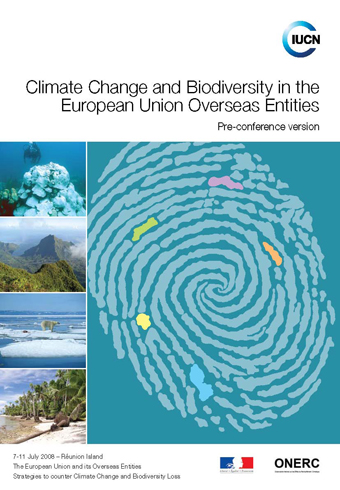Climate Change and Biodiversity in the European Union Overseas Entities
This background paper, produced by IUCN in collaboration with ONERC, offers for the first time a comparative analysis of the 28 overseas entities of the European Union. The European Union overseas entities are particularly vulnerable to climate change effects. Mostly tropical islands, they are generally small in size with limited resources;they are often isolated and largely exposed to cyclones and sea level rise.

Photo: IUCN
- Cover and Table of Contents (pdf, 0.4MB)
- Thematic Analysis (pdf, 5MB)
- Caribbean Region (pdf, 3.8MB)
- Indian Ocean region (pdf, 1.8MB)
- South Pacific region (pdf, 2MB)
- Macaronesia (pdf, 1.3 MB)
- Amazon region (pdf, 0.5MB)
- Polar and sub-polar regions (pdf, 2MB)
- South Atlantic (pdf, 0.4MB)
- Conclusion (pdf, 0.6MB
Abstract
The European Union overseas entities are particularly vulnerable to climate change effects. Mostly tropical islands, they are generally small in size with limited resources; they are often isolated and largely exposed to cyclones and sea level rise. Insular ecosystems are particularly rich, with remarkable endemism rates, but they are also extremely fragile and often highly deteriorated; therefore, their resilience to new aggressions is limited. Furthermore, island economies strongly rely on the quality of their natural environment, notably through tourism, fishing and subsistence farming; a degradation of their environment could deeply affect local communities. European territories located in the Polar Regions are particularly threatened as well; rises in temperature projected in the Arctic are twice higher than the global average. In summary, the European Union overseas entities seem to be “sentinel territories” or indicators testifying to the effects of global changes on ecosystems and societies worldwide.
This background paper, produced by IUCN in collaboration with ONERC, offers for the first time a comparative analysis of the 28 overseas entities of the European Union. It starts with a thematic analysis presenting the transversal threats on overseas entities in the face of climate change. Subsequent sections, specific for each of the 28 entities, provide some contextual data and an overview of their remarkable biodiversity, in addition to presenting the new threats resulting from climate change. Lastly, examples of responses to climate change or “best practices” are reported for selected territories.



